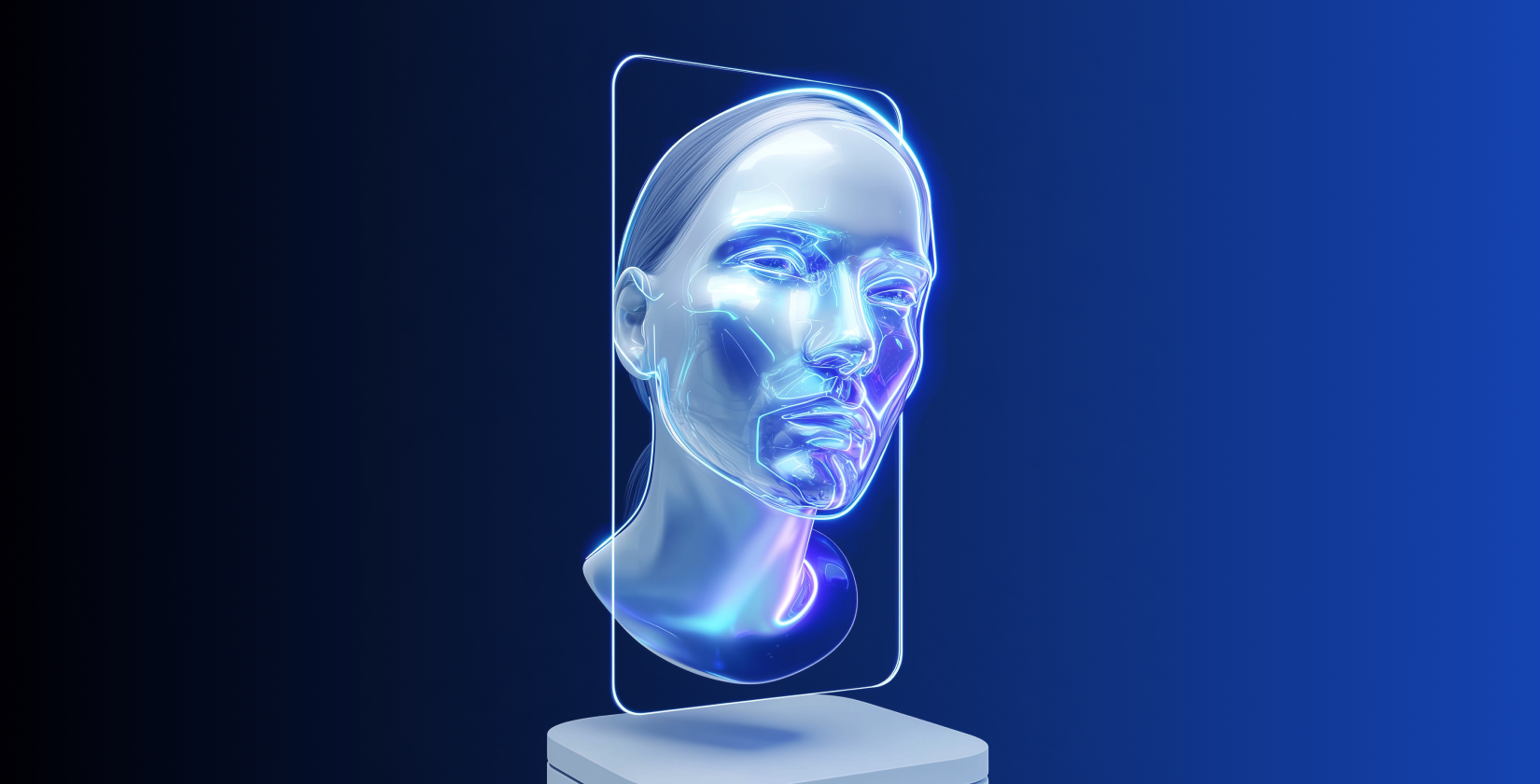
Face Recognition: The Complete Guide

At SoftServe, we use our experience in data science, augmented reality, and R&D to create facial recognition tools that make registration and authentication faster and easier. Our solutions leverage neural networks for face representation and facial landmark detection and are designed for seamless integration with mobile phones, tablets, and AR glasses.
WHAT IS FACIAL RECOGNITION TECHNOLOGY?
Face recognition is a sophisticated biometric security system that analyzes a person's unique facial features to identify or verify their identity. Unlike traditional methods that rely on passwords or access cards, this technology offers a more secure and efficient way to manage identity verification and access control.
Face recognition technology makes a difference across multiple industries. As long as you need to enhance security and user experience, it will come in handy. Let’s look at some common use cases.
Face recognition use cases
Retail:
Identify unauthorized activity needed for secure payments and fraud detection.
Financial services:
Hands-free transactions and strengthened account security.
Healthcare:
Patient identification and easy access to medical records.
Energy:
Secure sensitive facilities.
Automotive:
Driver authentication and personalized in-vehicle settings.
Media:
Ticketless event entry and faster check-ins.
WHAT ARE THE BENEFITS OF FACIAL RECOGNITION TECHNOLOGY?

Facial recognition technology is a valuable tool for businesses and individuals.
Enhanced security: Unlike passwords or access cards, which can be stolen or compromised, facial recognition uses something unique to each person — their face. This makes it more challenging for unauthorized individuals to access devices, accounts, or secure locations. It also gives you more control over access to sensitive information like personal data or financial accounts. By using photos or videos to screen for threats, the system quickly identifies anyone who doesn’t match authorized profiles, which adds another layer of protection against potential security breaches.
Improved accuracy: The system analyzes subtle details of a person’s face, like the shape of the cheekbones or the distance between the eyes. This level of precision reduces errors, making facial recognition much more reliable than other biometric methods like fingerprint or iris scanning, which sometimes fail due to issues like skin conditions or environmental factors. The greater authorization accuracy ensures that the right person is always identified, whether they’re accessing their phone, logging into an account, or completing a financial transaction.
Effortless integration: Facial recognition technology is seamlessly added to existing systems, be it a security platform, a customer service application, or a mobile app. It doesn’t require businesses to completely overhaul their infrastructure or start from scratch. Because of its flexibility, companies will quickly implement facial recognition without significant disruption to their operations.
HOW DOES FACIAL RECOGNITION WORK?
Detection: The process begins with detection, where the system scans an image or video feed to find a face. This is possible by computer vision, which enables machines to accurately identify and isolate faces in images — whether the person is facing forward or at an angle, and even from multiple cameras or video streams.
Analysis: The system examines features, such as the distance between the eyes, the shape of the nose, and the curve of the lips. This detailed facial data is then converted into a unique numerical representation known as a “faceprint.” The faceprint is a digital signature, which is compared against a database of stored images to verify identity.
Authentication: If the faceprint matches one in the database, the system authenticates the individual, granting them access or completing a transaction. With AI and machine learning, facial recognition systems are now faster and more accurate, even in low-light environments or with partial obstructions of the face. This enhanced performance makes it a reliable and efficient tool for real-time identification across many applications.
SUCCESS STORY: FACIAL RECOGNITION MOBILE SOLUTION

A great example of how facial recognition makes a difference is SoftServe’s collaboration with Anker, a leader in point-of-sale (PoS) hardware. Anker wanted to reinvent existing solutions for PoS without having to undergo major infrastructure changes for the clients. SoftServe developed face recognition software that lets cashiers log in using their face instead of access cards or passwords.
At an innovation workshop in Germany, SoftServe’s team integrated Anker’s cash cassettes with PoS tablets. Using Google Cloud Platform (GCP) and a simple iPad app, the system enables seamless authentication and access control. The facial recognition technology, powered by a deep neural network and GCP’s Vision API, ensures precise identification and security.
Explore our partnership with Google CloudThe system is now more secure and efficient. Cashiers no longer need physical access cards and save time by avoiding password resets. Only authorized personnel can access the cash cassettes, enhancing both productivity and security for Anker’s PoS systems. SoftServe continues to advise Anker on new innovations and provides technical expertise for future solutions.
CLOSING REMARKS
Facial recognition technology greatly improves secure access control and identity verification. With applications across industries like retail, healthcare, financial services, energy, automotive, and more, it improves accuracy, speeds up processes, and strengthens security.
At SoftServe, we develop customized facial recognition solutions that fit your unique business needs. By leveraging AI, data science, and advanced biometric tools, we help organizations enhance security and streamline operations. Ready to explore how facial recognition technology benefits your business? Let’s make it happen.
Start a conversation with us
